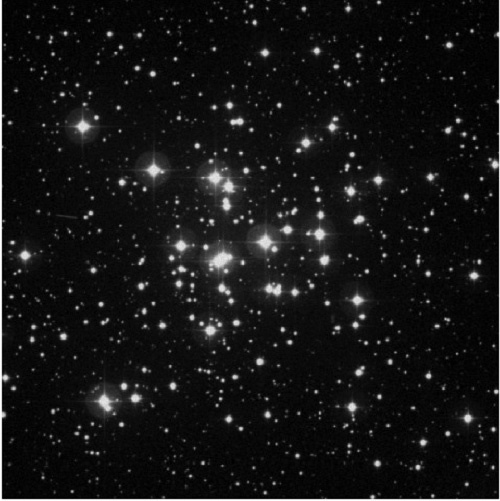For more than 40 nights spanning over 3 years, a group of scientists at the Aryabhatta Research Institute of Observational Sciences (ARIES) huddled together peering into the Milky Way through the 1-m telescopes perched in the hills of Nainital and Devasthal.
The scientists Dr. Yogesh Joshi, Dr. Brijesh Kumar, and Dr. Santosh Joshi, along with research students Jayanand Maurya and Ancy Anna John, who have been tracking the mystery of the open star clusters in our galaxy have recently, found 76 new variable stars in one of the relatively young open cluster, NGC 1960, which was formed at about 27 Million year ago in the Milky Way Galaxy. The variable stars can give us critical clues about the evolutionary stages of various stars in our galaxy.
Open star clusters, which were either poorly studied in the past or completely unstudied so far, are an ensemble of many loosely bound stars having diverse characteristics. They are important objects to understand the star formation history and probe the Milky Way Galaxy a little further because it is believed that the majority of stars in our Galaxy are formed in the star clusters.
Among the 76 stars that show variations in brightness, 70 variables show periodic variations, and 20 periodic variables belong to the cluster itself while rest are either foreground or background stars in the direction of this cluster. With this, ARIES, an autonomous institute of the Department of Science and Technology, takes the credit of spotting such a large number of variable stars in this young open star cluster. Most of these variables show only tiny variations in the brightness and complete their periodic variation in less than 24 hours.
Some of the observed variables are a rare class of pulsators, which drives the small amplitude pulsations in the stars as massive as our own Sun. Their research work has been published in the journal “Monthly Notices of the Royal Astronomical Society,” one of the leading astronomical journals published by OXFORD University Press in the UK.
The scientists at ARIES are further aiming to do an in-depth analysis of many more star clusters in the near future, including the data from space missions. They believe their study will not only vital to understanding the pulsation mechanism but also to identify the cause of variation in some stars among a large number of cluster members.































